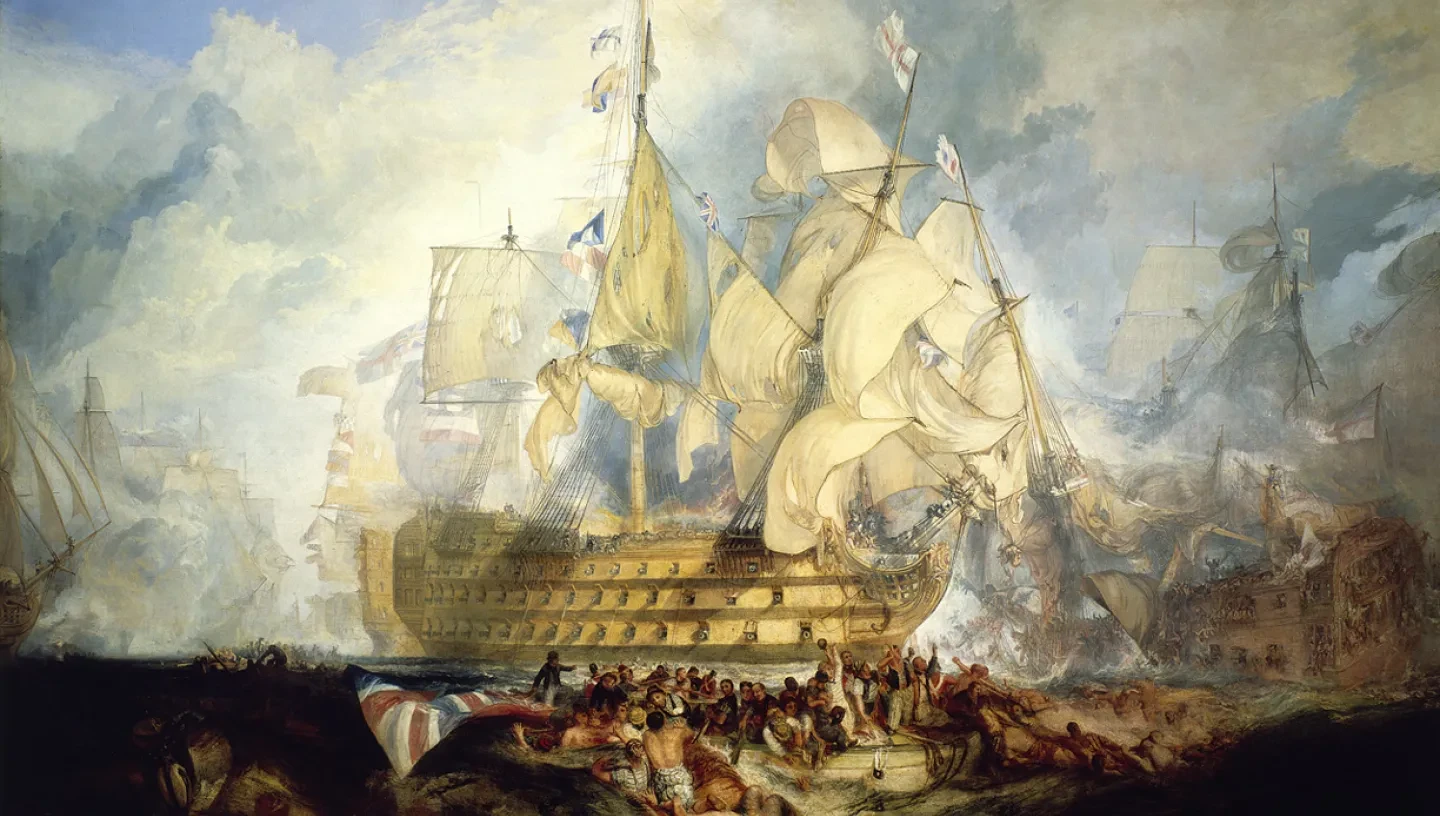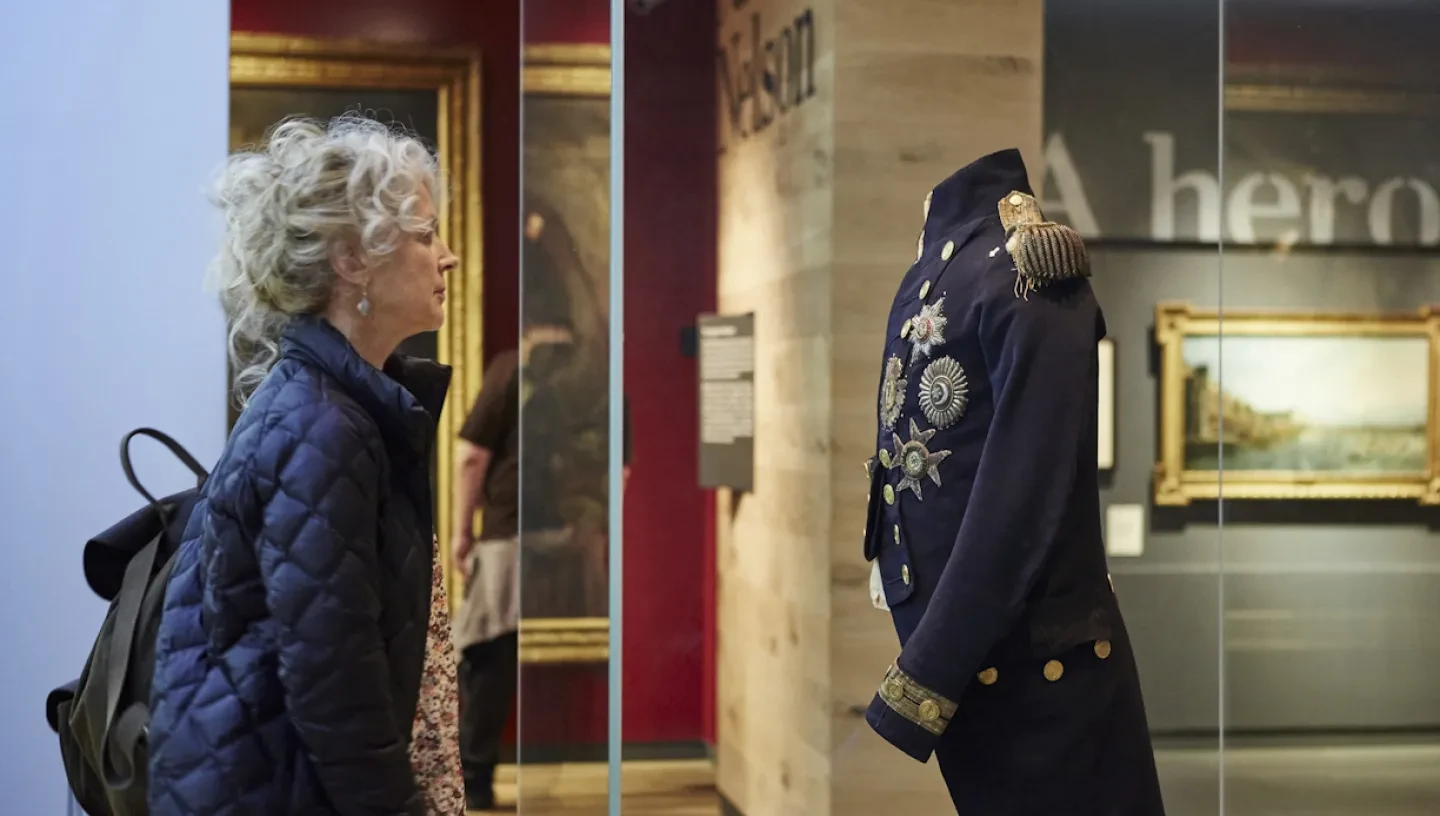
Battle of Trafalgar background
The Battle of Trafalgar took place on 21 October 1805. Find out what led up to the British attack on the Franco-Spanish fleet – and how Nelson laid the plans for victory.
The Battle of Trafalgar is one of the most famous battles in British naval history. The battle was fought between the British Royal Navy and the combined fleets of France and Spain. It took place during the Napoleonic War (1803–1815), as Napoleon Bonaparte and his armies tried to conquer Europe.
Admiral Lord Nelson was already a national hero, but the fact that he was killed at Trafalgar made it his most famous victory and ensured his legacy lives on to this day.
The Battle of Trafalgar by J.M.W. Turner - the story of the painting
Background
In 1805 Napoleon Bonaparte and his first French Empire dominated continental Europe, while the Royal Navy ruled the seas. Napoleon had ambitious plans to rule all of Europe, including Britain, and had attempted an invasion in 1804.
When this failed, Napoleon turned his attentions to Austria, which had recently declared war.
Napoleon instructed the Franco-Spanish fleet, under the command of Vice-Admiral Pierre Villeneuve, to sail from the port of Cadiz, Spain into the Mediterranean to support his operations. On 19 October 1805, 33 ships set sail for an attack on Naples, in order to divert Austrian forces towards Italy and disrupt their campaign in central Europe.
The British were keen to destroy the Franco-Spanish fleet, which they believed posed a threat to British security and its dominance of the seas. Nelson, having spent the last summer chasing Villeneuve’s fleet to the West Indies and back to prevent British invasion, assembled his 27 ships for an attack.
Nelson’s plan
In 1805 the British fleet was in a poor condition. It lacked the numerical superiority of the combined French and Spanish fleet, and had been subject to a number of cost cuts by the Earl of St Vincent, the First Lord of the Admiralty. Nelson’s battle plan therefore relied more on the skills and experience of his officers and men, rather than the strength of his ships.
Nelson left Portsmouth on HMS Victory on 14 September 1805 and stationed his fleet 40 miles off Cadiz. From there he set about moulding his captains into a single fighting unit. He held dinner parties to explain his battle plan, which he called ‘The Nelson Touch’.
The ships were to divide into two columns, with Nelson in command of one, and his good friend and comrade Vice-Admiral Cuthbert Collingwood in command of the other. Both were to sail directly at the enemy, with Nelson leading the northerly column towards the enemy flagship, and Collingwood attacking the rear of the enemy line. Their approach depended on a calculated risk that British naval gunnery was vastly superior to that of the enemy, and ensured that a close-range, decisive battle would be fought
Discover what happened during the battle and in the aftermath


